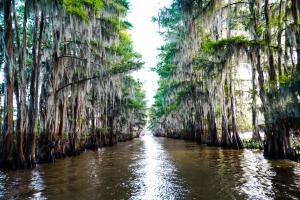
The Cultural and Ecological Value of Swamp Tours for Louisiana Visitors
According to Milton Walker Jr., owner of Louisiana Tour Company based in New Orleans, swamp tours serve as more than entertainment—they function as living classrooms and windows into centuries-old traditions. The winding waterways, cypress trees, and wildlife encounters provide a deeper understanding of how nature and culture intersect in the region.
“A swamp tour introduces guests to the complex balance between the land, water, and people who have lived in these environments for generations,” said Walker. “The experience creates a connection to Louisiana that goes beyond what’s found in brochures or city landmarks.”
Tours typically travel through marshes, bayous, and swamps on flat-bottomed boats or airboats, guided by licensed captains with extensive knowledge of the environment. These captains not only navigate narrow, twisting channels but also share insight into the natural rhythms of the wetlands—highlighting plant life, seasonal cycles, and the behaviors of animals like alligators, turtles, and wading birds.
The ecological importance of Louisiana’s wetlands is significant. The swamps act as natural filtration systems, flood control buffers, and wildlife habitats. Each year, thousands of acres of wetland disappear due to erosion, storms, and human impact. Tour operations that are responsibly managed can help raise awareness about conservation efforts and environmental sustainability.
In addition to environmental education, swamp tours often touch on the cultural history of the region. Stories about early settlers, Cajun and Creole communities, fishing practices, and folklore are commonly shared by guides who grew up in the area. This narrative element helps bridge the gap between past and present, giving visitors a better understanding of how deeply the environment has shaped local traditions.
For many visitors, the chance to see a live alligator in its natural habitat is a highlight. Alligator sightings depend on weather and season, but experienced guides are trained to locate these animals safely and respectfully. Beyond alligators, tours often feature sightings of herons, egrets, wild boars, nutria, and even bald eagles. The swamps are home to a diverse array of species, and a slow-moving boat offers a rare opportunity to observe them in a quiet, non-disruptive setting.
Swamp tours also appeal to photographers and nature enthusiasts. The distinctive light filtering through moss-draped cypress trees, the reflections on still water, and the movement of wildlife offer countless opportunities for capturing the atmosphere of the wetlands. These images often become lasting visual memories that evoke the mood and mystery of South Louisiana.
Logistically, swamp tours are accessible from several locations near New Orleans and can be scheduled year-round. Most tours run daily, with options for private charters or group excursions. Morning and early evening tours tend to feature the most wildlife activity due to temperature and feeding patterns.
Swamp tours are often paired with other regional activities, such as plantation visits or cultural walking tours. This makes them an easy addition to an itinerary focused on exploring Louisiana’s diverse offerings. Tour providers often offer transportation from hotels in the city, allowing guests to experience the wetlands without the need to rent a vehicle or navigate unfamiliar roads.
Safety and environmental stewardship remain priorities for tour operators. Licensed captains adhere to regulations designed to protect both wildlife and passengers. Boats are inspected regularly, and guides receive training on both navigation and wildlife interaction protocols.
Louisiana Tour Company operates swamp tours out of the New Orleans metro area, working closely with conservation-minded partners to ensure minimal environmental impact. The company provides interpretive tours designed to educate and inform while allowing for close, respectful observation of the ecosystem.
The demand for authentic, experience-based tourism continues to rise, and swamp tours align with this trend by offering a meaningful connection to the landscape. Rather than passively observing from a distance, guests become participants in the story of the bayou—learning how each species, plant, and waterway plays a role in maintaining the balance of the environment.
In regions where urban development meets untouched wilderness, swamp tours help preserve local knowledge and inspire future advocacy. They provide an accessible way to explore fragile landscapes while fostering respect for the communities and wildlife that depend on them.
As tourism evolves, experiences that provide education, engagement, and ecological awareness continue to stand out. In the context of Louisiana, the swamp tour remains one of the most direct ways to explore the heartbeat of the region and understand the relationship between land, water, and tradition.
Morgan Thomas
Rhino Digital, LLC
+1 504-875-5036
email us here
Visit us on social media:
Facebook
Distribution channels: Culture, Society & Lifestyle, Environment, Travel & Tourism Industry
Legal Disclaimer:
EIN Presswire provides this news content "as is" without warranty of any kind. We do not accept any responsibility or liability for the accuracy, content, images, videos, licenses, completeness, legality, or reliability of the information contained in this article. If you have any complaints or copyright issues related to this article, kindly contact the author above.
Submit your press release

